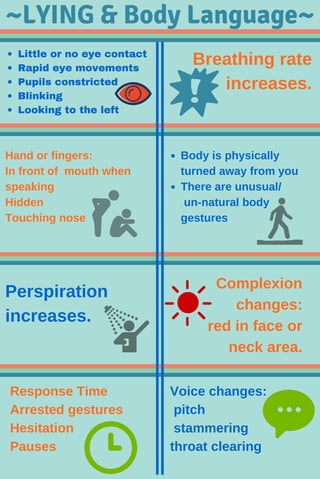Report
Share
Download to read offline

More Related Content
What's hot
What's hot (13)
Case study presentation hearing impairment yunfan jiang

Case study presentation hearing impairment yunfan jiang
Assessing Hearing Loss in Infants and Young Children

Assessing Hearing Loss in Infants and Young Children
Lying and Body Language-Infographic-TPM
- 1. Little or no eye contact Rapid eye movements Pupils constricted Blinking Looking to the left Hand or fingers: In front of mouth when speaking Hidden Touching nose Body is physically turned away from you There are unusual/ unnatural body gestures ~LYING & Body Language~ Breathing rate increases. Complexion changes: red in face or neck area. Perspiration increases. Voice changes: pitch stammering throat clearing Response Time Arrested gestures Hesitation Pauses